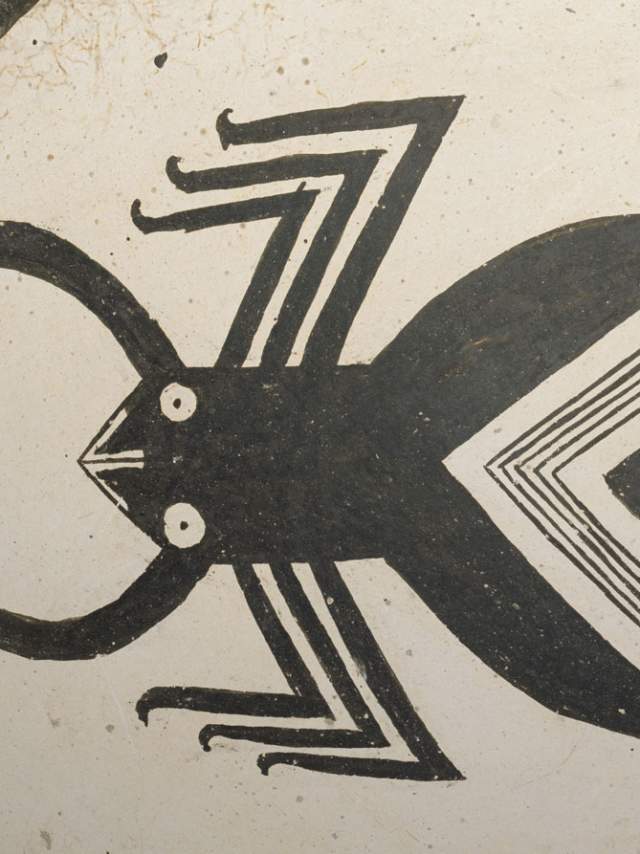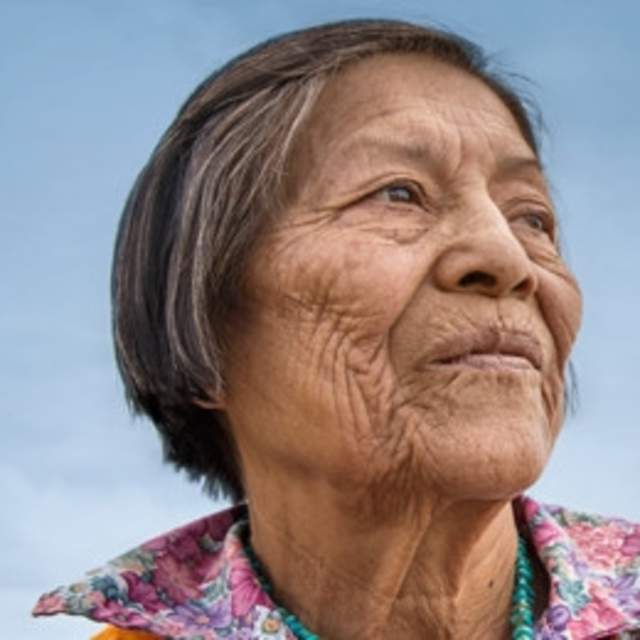Traditional Native Art In New Mexico
New Mexico has a long history of traditional Native American art that stretches across the kaleidoscopic canvas of this land. Using tools handed down from generation to generation, many Native American artists across New Mexico spend countless hours perfecting the craft and preserving the tradition of their ancestors. The history of this art is as rich as the works themselves.
Traditional Native Art Styles

Photo Credit: Palace of the Governors Photo Archives
Maria Martinez polishing pottery, San Ildefonso Pueblo, New Mexico
Photographer: Wyatt Davis
Date: 1938
Negative Number: 044192
New Mexico has a long history of traditional Native American art. Weaving, pottery making, silversmithing, Kachina doll making, and other art forms have been in existence long before New Mexico was proclaimed a state in 1912 and long before Spanish colonists arrived in the early 1600s. Using tools handed down from generation to generation, many Native American artists and artisans spend countless hours to perfect the craft and preserve the tradition of their ancestors.
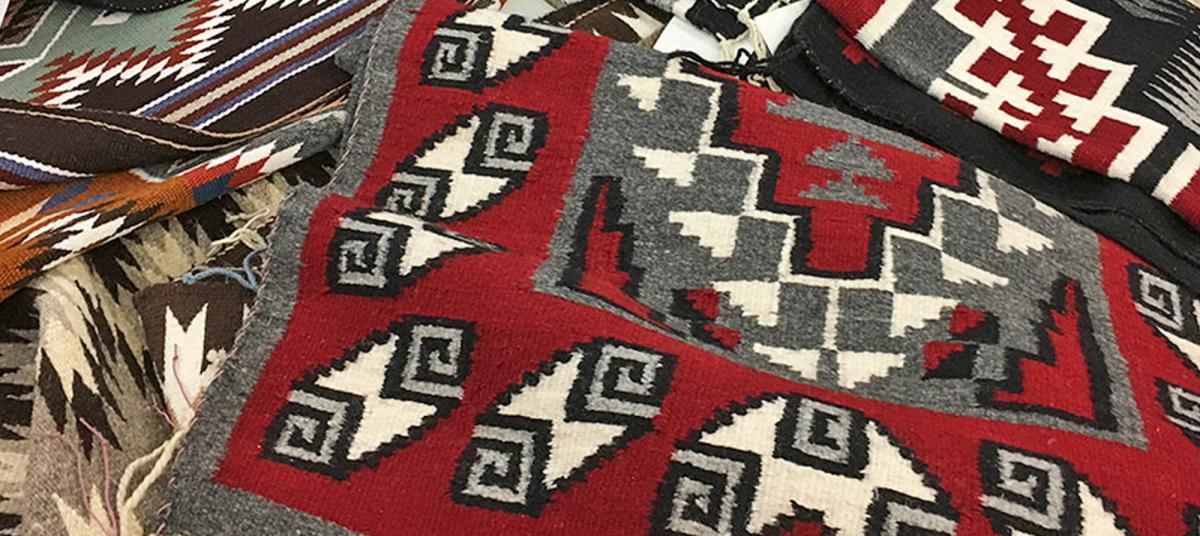
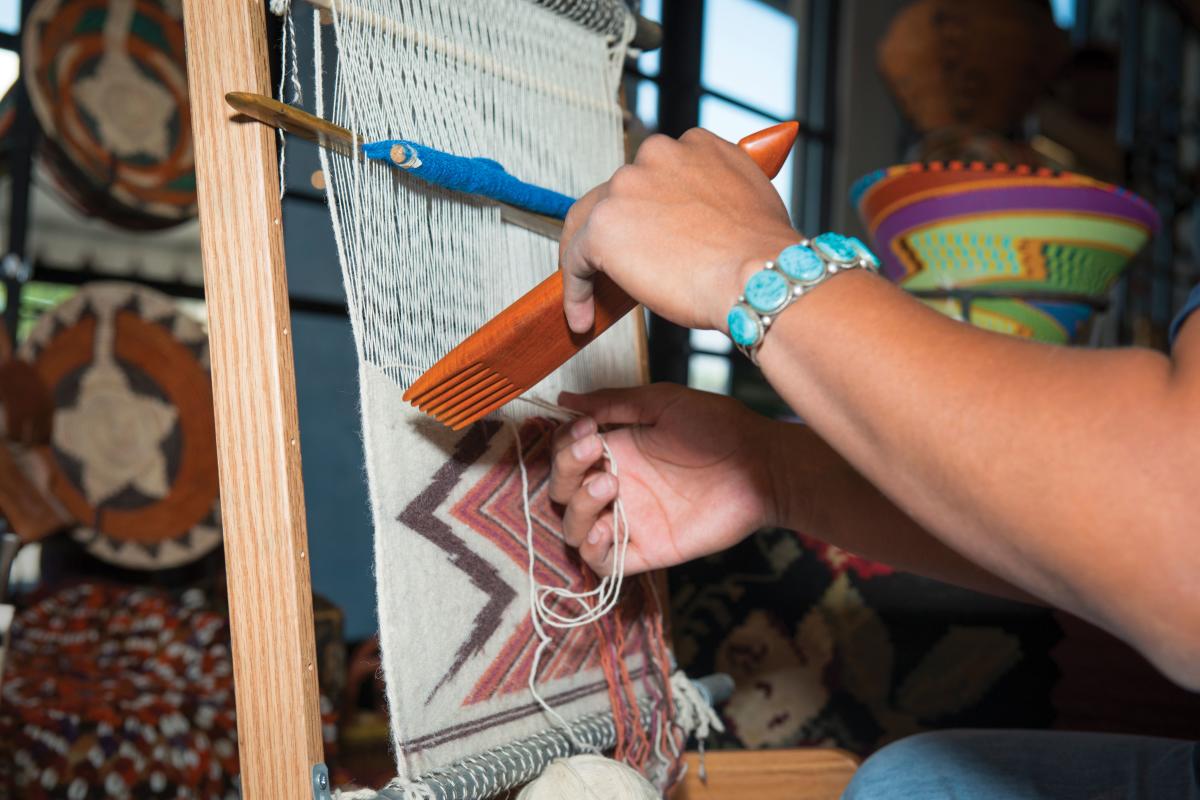
Weaving
Scholars theorize the Navajo learned to weave from the Pueblo people, the region’s first weavers. The Pueblo people made baskets, robes, sandals, and plaited and twined mats from fibers, and decorated them with feathers and rabbit fur. Around A.D. 700, the Pueblos began loom weaving with indigenous cotton, often using a backstrap loom, belted around the waist. Hopi and Pueblo weavers advanced the art with more detailed designs. Although they are generally distinct in patterns, colors, and weaving techniques, some of the Pueblo, Navajo, and Rio Grande weaving styles overlap due to contact among the cultures.
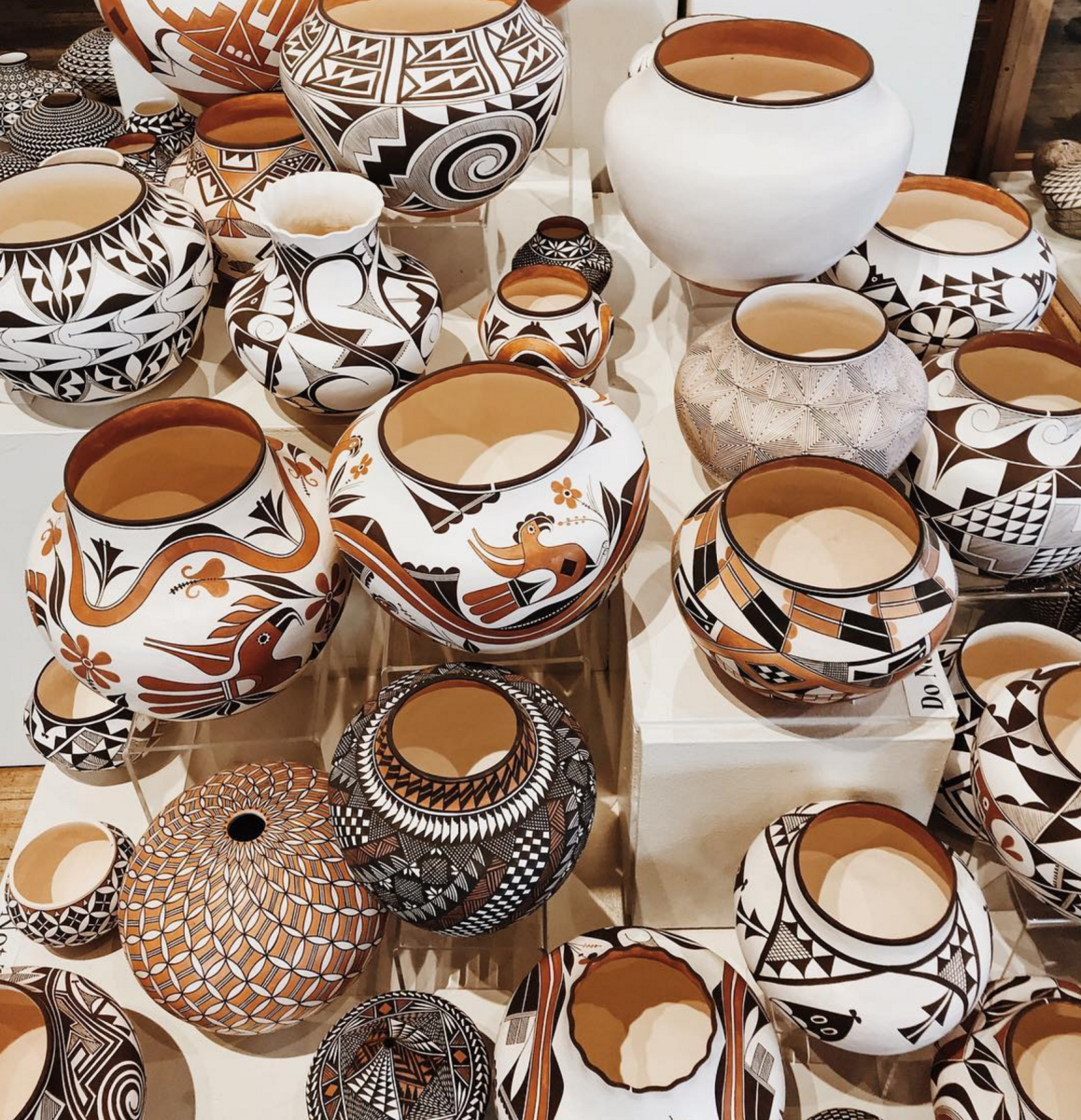
Pottery
One of the most striking characteristics of Pueblo Indian pottery is its variety. With endless variations of texture, color, form, and style of decoration, diversity is one of the qualities of Pueblo Indian pottery that often appeals to enthusiasts. From gourds to stones, the makers of traditional pottery continue to use age-old tools for the creation of each desired vessel. Materials local to their own Pueblo, including fuel of the fire and clay dug up from the ground, must be gathered. Impurities are removed by hand. Paints are prepared by grinding rocks or clay to create a colorful palette, or boiling plants to produce black carbon paint. Artists in virtually every one of the pottery-making Pueblos are reinterpreting traditional forms, creating new styles or even reviving old ones.

Silversmithing
Silversmithing was introduced to the Navajo people in the early 19th century by a Mexican silversmith who taught the craft to Atsidi Sandi. In the mid-19th century, another Navajo silversmith, Atsidi Chon, had also mastered the art and introduced it to his friend Lanyade of the Zuni Pueblo. Prior to this time at the Zuni Pueblo, copper and brass were the only metals crafted. Chon introduced the technique of stamping with designs based on Mexican leather craft. The cross-cultural relationship has made it nearly impossible to distinguish early Navajo and Zuni silver jewelry. By 1910, the whole design of Zuni jewelry was oriented toward cluster and channel work, mosaics, and the display of gems. Today, almost all silver is signed or marked, or the marker is identifiable. It is illegal in New Mexico to sell non-Native American made jewelry as Native American-made and a reputable dealer should be able to provide proof of authenticity in writing.

Kachinas
While the exact origins of Kachinas (also spelled “Katsina,” the plural “Katsinam”) remain a topic of debate. Kachinas are known to have existed in the cosmology and religious practices of the Puebloan peoples as well as the Hopi, Zuni, Tewa, and Keresan tribes for generations. And while today they are known primarily for their connection to Hopi and Zuni culture, kachinas have existed in the cosmology and religious practices of many Puebloan peoples including Tewa and Keresan tribes.
In Hopi, the word Kachina (Katsina or Qatsina) means “life bringer” and can be anything that exists in the natural world or cosmos. The Zuni believe that the Kachinas live in the Lake of the Dead, a mythical lake, which is reached through Listening Spring Lake, located at the junction of the Zuni River and the Little Colorado River. Kachinas are actually stylized religious icons, meticulously carved from cottonwood root and painted to represent figures from Hopi and Zuni mythology. For generations, these figures have been used to teach children about their religion. There are more than 400 different Kachinas in Hopi and Pueblo culture.
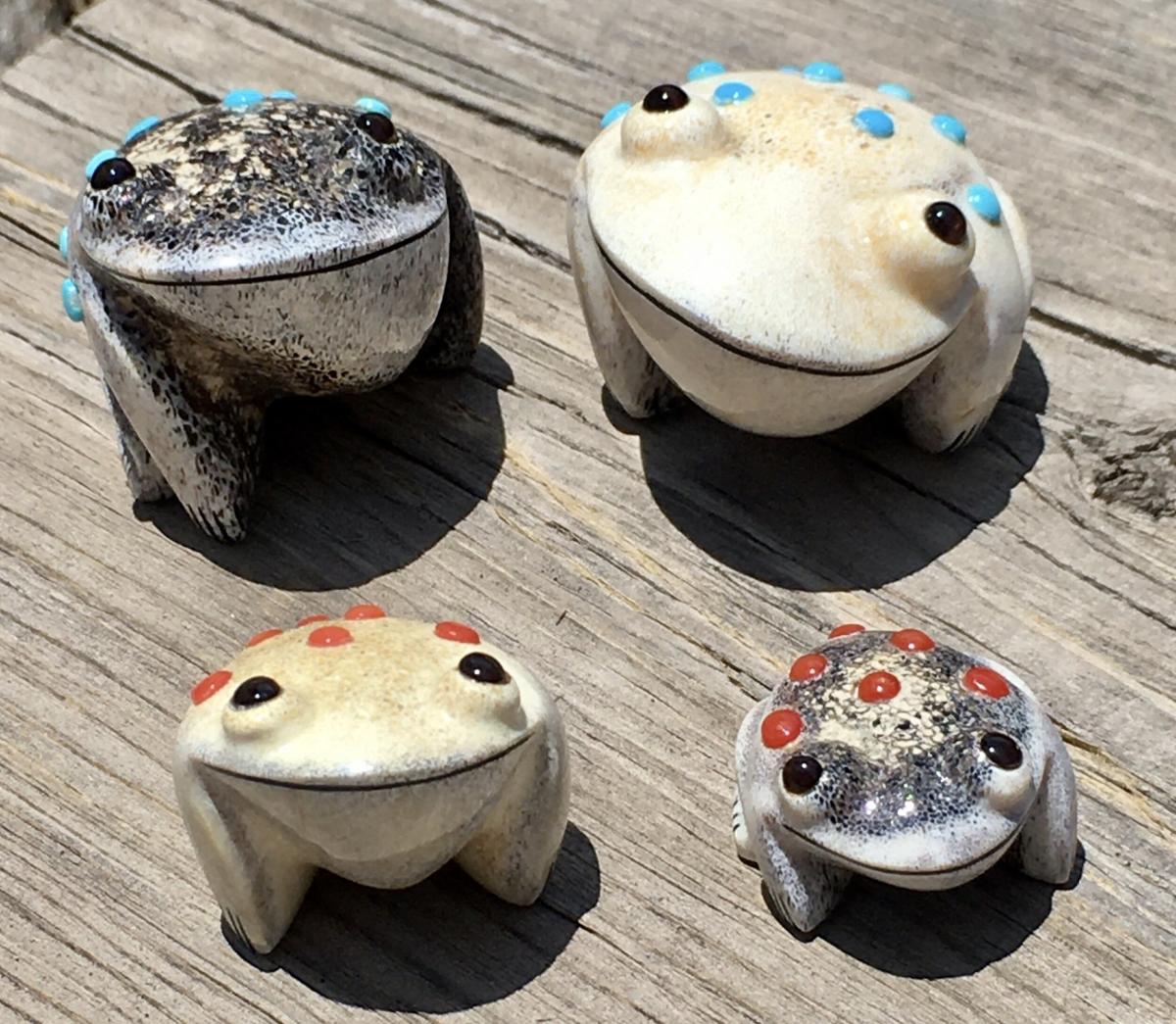
Fetishes and Carvings
Fetishes are small carvings that depict animals or other important Native icons. These carvings are made primarily from stone but can also be made of other materials such as jet, coral, or shell. While many tribes and Pueblos in the Southwest are known for making fetishes, they are most closely associated with the Zuni Pueblo, who are considered the most skilled fetish carvers. Traditionally, these small carvings serve ceremonial purposes and serve as a powerful connection to nature and the spirit world. However, until the carving is blessed by a Tribal spiritual leader, it remains an intricately carved piece of art.
